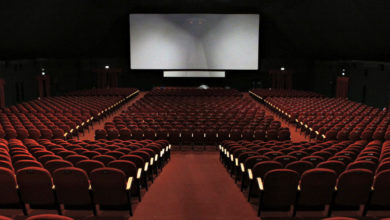Podcast: Play in new window | Download
The Bayeux Tapestry is a remarkable work of art and one of the most famous examples of medieval embroidery. It is a 70-meter-long embroidered linen cloth depicting the events leading up to the Norman Conquest of England in 1066. The tapestry has been a source of fascination for scholars and art enthusiasts for centuries, and its history is just as interesting as the scenes it depicts.
The Bayeux Tapestry was likely created in the 1070s, just a few years after the events it portrays took place. It was most likely commissioned by Bishop Odo of Bayeux, who was the half-brother of William the Conqueror, the leader of the Norman invasion of England. The tapestry was probably created by a group of skilled craftspeople, possibly nuns or monks, who used a combination of embroidery techniques to create intricate scenes.
The tapestry tells the story of the events leading up to the Norman Conquest of England, beginning with the death of Edward the Confessor, the last Anglo-Saxon king of England. It then shows the events leading up to the Battle of Hastings, including the construction of William the Conqueror’s ships, the crossing of the English Channel, and the battle itself. The tapestry ends with the crowning of William as King of England.
The Bayeux Tapestry is a remarkable piece of art, not only for its length but also for its detail and craftsmanship. The scenes are richly embroidered with colourful wool threads and feature a variety of different stitches, including stem stitch, split stitch, and couched work. The images are also accompanied by Latin inscriptions that describe the events taking place and provide additional context for the story.
Over the centuries, the Bayeux Tapestry has survived wars, fires, and even a few attempts at theft. It has been displayed in a variety of different locations, including Bayeux Cathedral, the Louvre Museum in Paris, and the Centre Guillaume le Conquérant in Bayeux, France, where it currently resides.
The tapestry has also been the subject of much scholarly debate over the years. Some historians believe that the tapestry was created in England rather than in Bayeux, while others suggest that it was created in multiple locations by different groups of craftspeople. There are also questions about the accuracy of the scenes depicted in the tapestry and whether it was intended to be a historical document or a work of propaganda.
Despite these debates, the Bayeux Tapestry remains one of the most important artefacts from the medieval period. It provides a fascinating glimpse into the events that led to the Norman Conquest of England and offers a rare example of medieval embroidery at its finest. Whether you are a history buff, an art lover, or simply someone who appreciates beautiful craftsmanship, the Bayeux Tapestry is a must-see.
Best Time to Visit the Bayeux Tapestry
The Bayeux Tapestry is displayed year-round at the Centre Guillaume le Conquérant in Bayeux, France, but the best time to visit depends on your preferences.
If you prefer to avoid crowds and enjoy milder weather, it’s best to visit during the shoulder seasons of spring (April to June) and fall (September to November). During these times, you’ll also find lower prices on accommodations and flights.
However, if you want to experience Bayeux at its liveliest and most colourful, consider visiting during the summer months (June to August) when the town hosts various festivals and events, including a medieval fair that takes place every year in early July. Keep in mind, though, that this is the busiest time of year for tourism, and you’ll need to book your accommodations well in advance.
Overall, the best time to visit the Bayeux Tapestry depends on your preferences and travel goals.
Credits
Image: A scene from the Bayeux Tapestry depicting Bishop Odo rallying Duke William’s army during the Battle of Hastings in 1066 – Public domain
Podcast: Play in new window | Download





